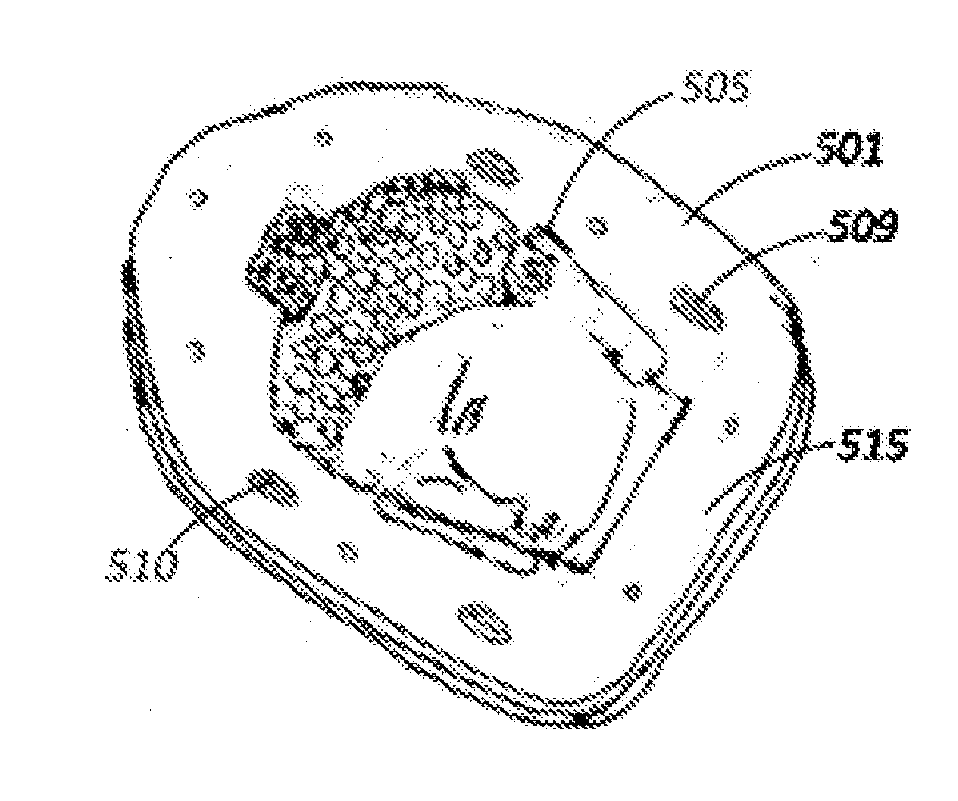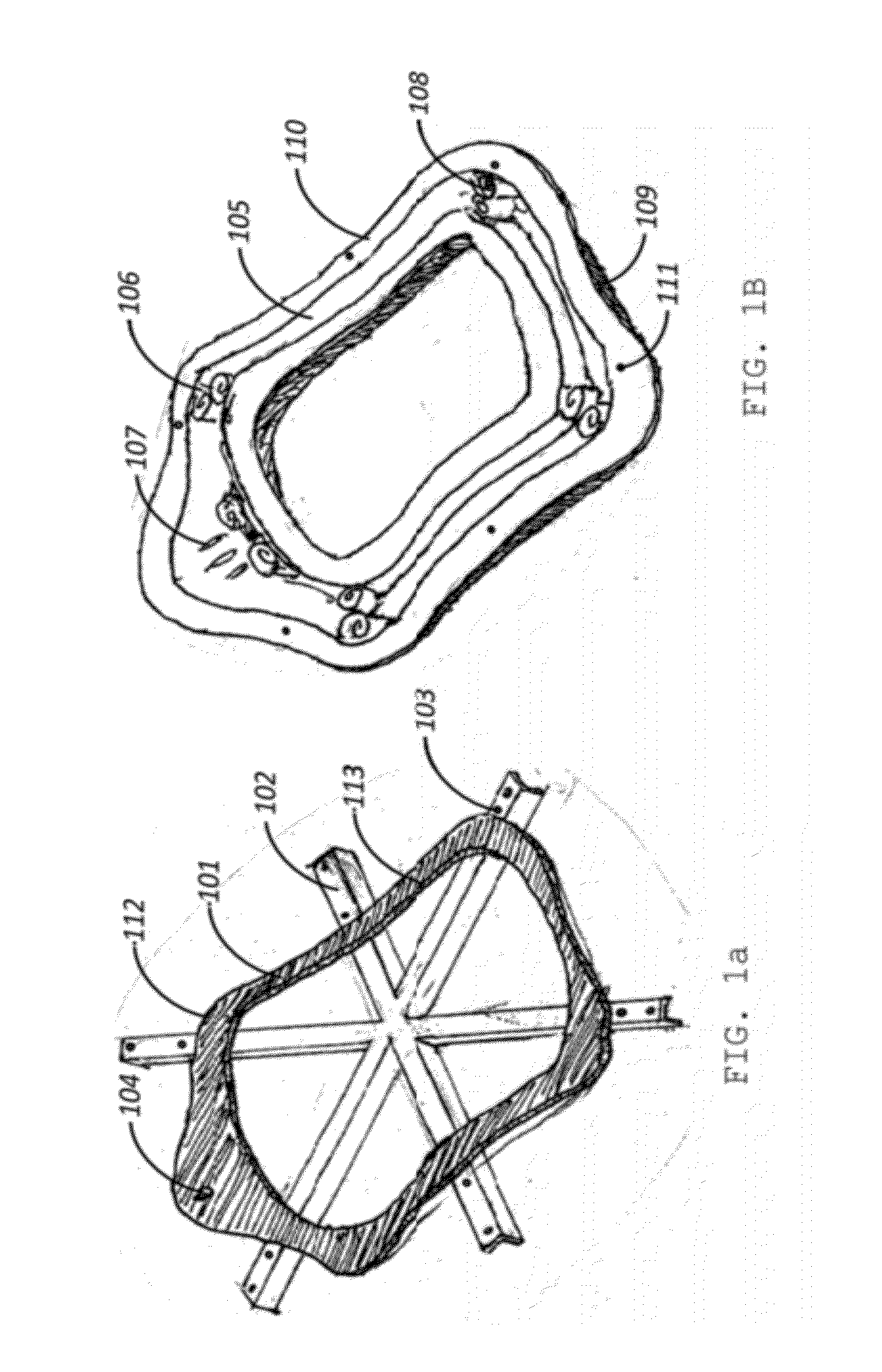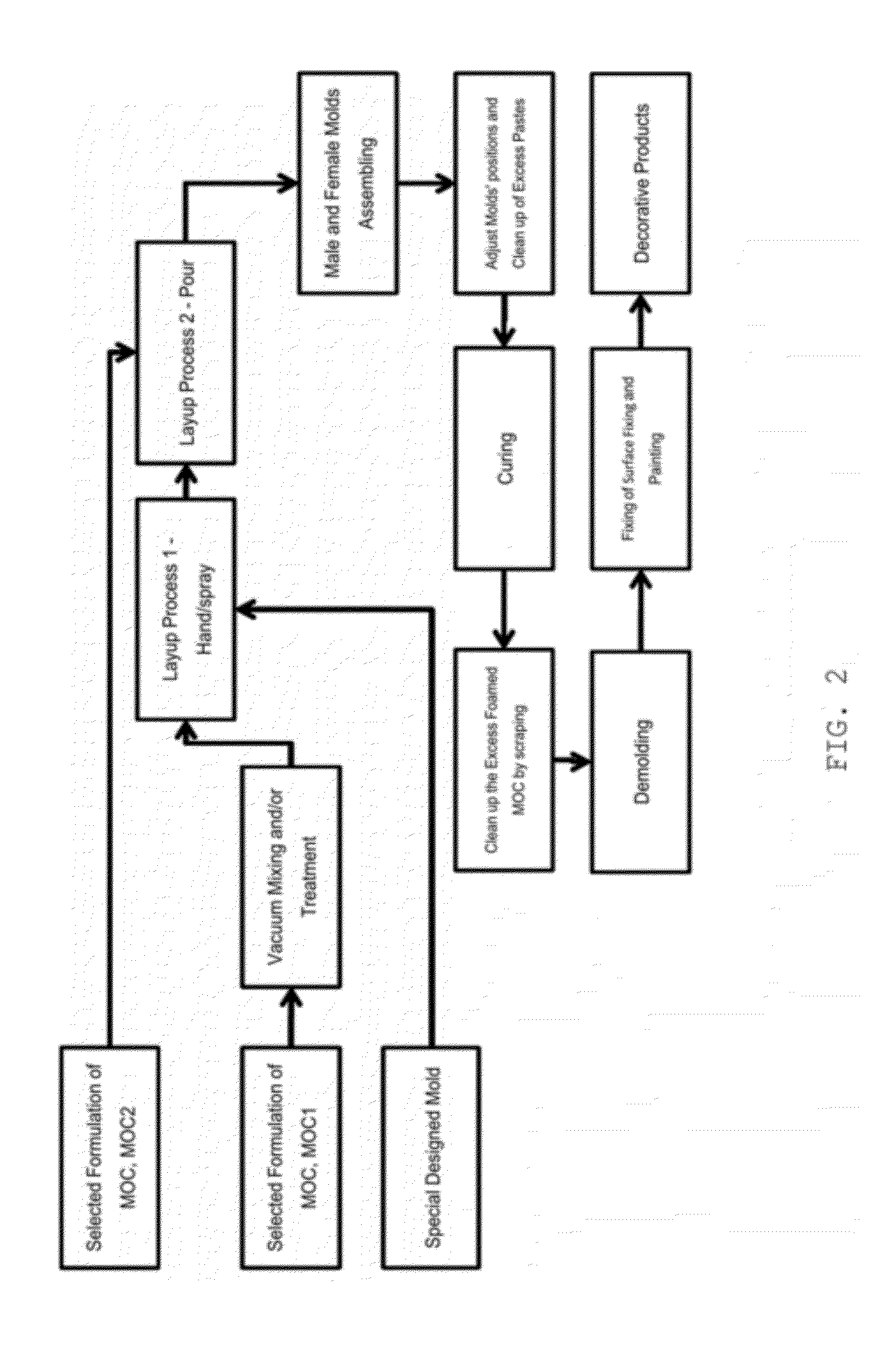Novel Decorative Products and the Production Methods Therefor
- Summary
- Abstract
- Description
- Claims
- Application Information
AI Technical Summary
Benefits of technology
Problems solved by technology
Method used
Image
Examples
example 1
[0058]1.5 kilograms of MOC1 was mixed at vacuum condition. The resulting MOC1 paste was casted onto the female mold (101) and male mold (105) as shown in FIG. 1. 2 kilograms of MOC2 was mixed under atmospheric condition. The resulting MOC2 paste from the atmospheric mixing process was casted on top of the casted vacuum mixed MOC1 paste of the female mold (105) and filled up 75 percent of the remaining mold cavity. The excess paste was scrapped after the assembly of the male mold (101) and female mold (105). The pastes were allowed to cure, expand and set. The foamed paste squeezed out was then scraped prior to the demolding process. Any surface deflect of the demolded minor frame was fixed and the fixed minor frame is painted to yield the final products.
[0059]The combustibility of the painted mirror frame was tested according to ASTM E136 and BS476 part 4 and the result showed that the minor frame was non-combustible. Said painted minor frame was also tested for the volatile organic...
example 2
[0060]Conventionally, it is impossible to make a Buddha's head decoration of weight heavier than 10 kilograms using MOC paste and the mold shown in FIG. 4 since the density of MOC paste can never reach a value of higher than 5.0 kilograms per liter. However, by using a preferred embodiment of the instant invention as shown in FIG. 4, it is possible to make said Buddha's head decoration. First, a core was made by carbon steel, which weighed 6 kilograms. Said core was then fixed on to a steel bar (404), after the assembly to the mold parts, the clearance between the core and the mold parts (402, 403) was about 7 millimeters. 4 kilograms of MOC3 was mixed at vacuum condition and the resulting MOC3 paste was then casted onto the said carbon steel core by hand casting. A fiber mat was applied on the top of the hand casted MOC3 paste. Then, the mold parts were assembled. The remaining MOC3 paste was filled into the remaining mold cavity (409). The filled mold was then treated in vacuum to...
example 3
[0062]Paste shaping tool (503) was used to minimize the seam lines of decorative products that are manufactured according to the process illustrated in FIGS. 5a-5h by using mold parts (501, 502) and hand casting of said MOC1. 50 pieces of such products were produced in which the average width of the seam lines found on the product was 1.4 millimeters.
PUM
| Property | Measurement | Unit |
|---|---|---|
| Length | aaaaa | aaaaa |
| Length | aaaaa | aaaaa |
| Length | aaaaa | aaaaa |
Abstract
Description
Claims
Application Information
 Login to view more
Login to view more - R&D Engineer
- R&D Manager
- IP Professional
- Industry Leading Data Capabilities
- Powerful AI technology
- Patent DNA Extraction
Browse by: Latest US Patents, China's latest patents, Technical Efficacy Thesaurus, Application Domain, Technology Topic.
© 2024 PatSnap. All rights reserved.Legal|Privacy policy|Modern Slavery Act Transparency Statement|Sitemap



